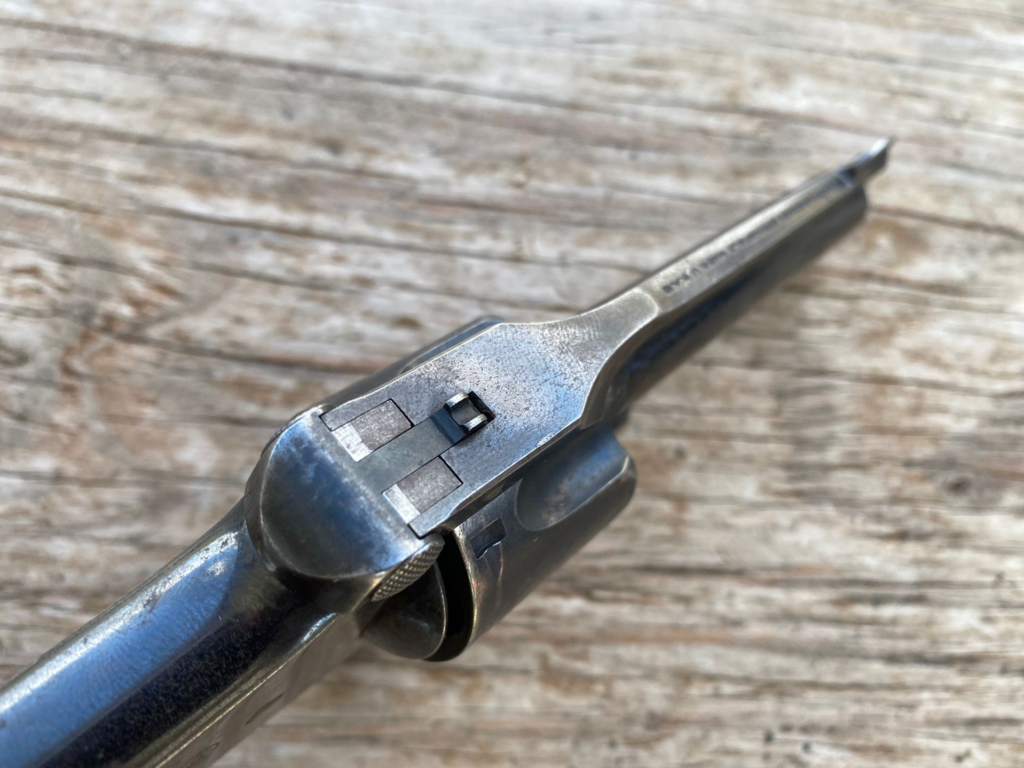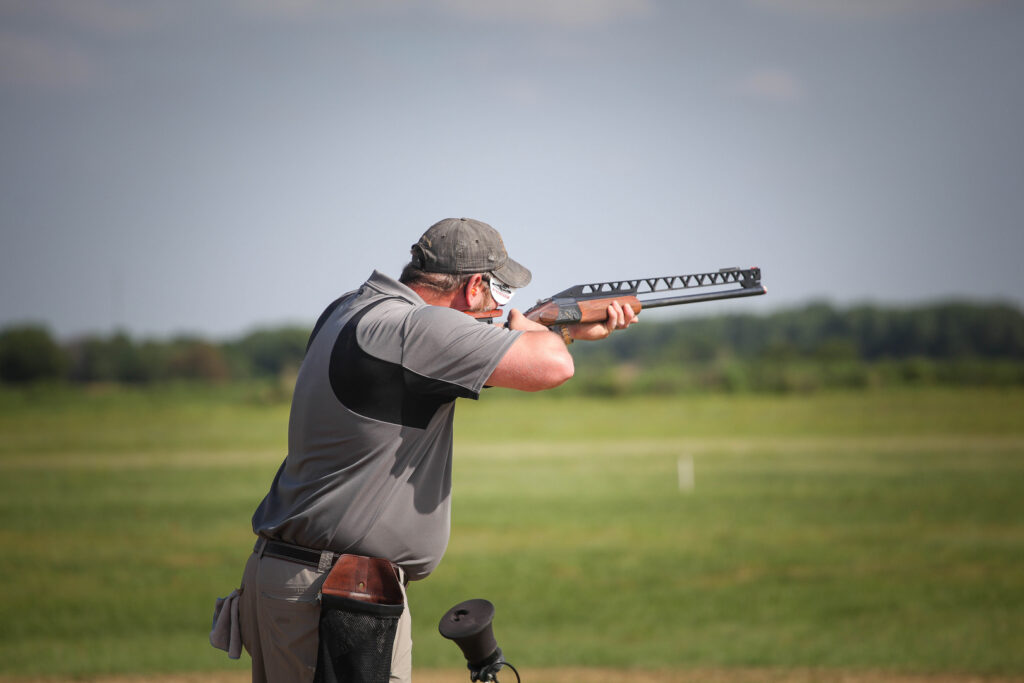Continued from Part 1…
My S&W Safety Hammerless
The specific revolver depicted above has been in my family for some time. Unfortunately, I’m not fully aware of its history other than it was purportedly built in 1907, according to a serial number lookup. It’s likely a newer 5th model change revolver.
Early Double Action
Fundamentally, this double-action-only revolver works like any other, with both the internal hammer and trigger feeding off mainspring tension to function correctly. The trigger is interlinked with a hand that actuates the ratchet on the cylinder. It also actuates a rudimentary but precise cylinder stop. It’s worth noting that more than a century later, the timing on this revolver is impeccable.
Advertisement — Continue Reading Below
Due to their nature, Safety Hammerless revolvers have a very long and heavy trigger pull. I’d estimate the one on this specimen to be at least fifteen pounds. Unfortunately, my digital trigger pull scale is too sensitive to measure this trigger reliably. Its pull is smooth, but it’s just horrendously heavy and long. I suspect this has to do with the configuration under its sideplate and the physical distances between the major internal components.
Cylinders on modern Smith & Wesson revolvers rotate counter-clockwise, but this isn’t true of these earlier 19th-century designed guns. Safety Hammerless cylinders spin clockwise, and for that matter, their sideplates are found on the left side of the frame.
Breaking Frame

Advertisement — Continue Reading Below

The biggest novelty of this revolver is its sophisticated top-break mechanism. The frame and barrel conjoin in two places: on the bottom, where both parts hinge and pivot, and on the corner, where both parts are secured by a spring-loaded latch. This latch, which also serves as the platform for the rear sight, is unlocked by the thumb.
Like any modern revolver, Safety Hammerless models also include a star and ejector rod to manage brass. However, the rod itself is inaccessible from the outside. Instead, it’s automatically actuated when the action is broken open, and the barrel hinges past the first ⅓ of its arc to dead bottom. This movement is elegantly executed and speaks to the fit-and-finish standards that these guns of old needed to simply function.
Advertisement — Continue Reading Below
The surfaces that make contact with each other on that lower portion where they hinge are extremely polished and smooth and have more in common with a mechanical watch than a handgun. After the barrel pivots to dead bottom, the star and ejector assembly spring back to their resting position, allowing the shooter to insert five fresh cartridges.
Sights And Barrel
The barrel on my Smith & Wesson Safety Hammerless measures just short of 3 ¼ inches from the start of the forcing cone all the way to the muzzle. Throughout the product lifespan of the Safety Hammerless product family, the 3 ¼ barrel length was the default standard for both .32 and .38-caliber top break revolvers.
The barrel, topstrap, and pivoting juncture that mates into the frame are all elaborately machined from a single piece of steel. (For what it’s worth, during its heyday, Smith & Wesson ads used to boast about the quality of its steel compared to those used by their competitors in their Safety Hammerless clones, especially when .38 S&W ammunition shifted from black powder to more modern smokeless propellants at the industry level).
Advertisement — Continue Reading Below
Regardless, it’s hard not to appreciate the intricacies in manufacturing. Especially considering how many steps it takes to mill, machine, and finish off what is essentially the front half of this revolver from a single piece of metal. I also couldn’t help but notice the relative thinness of the barrel walls. Then again, the .38 S&W cartridge has never been a hot screamer.
Similarly, the half-moon bladed front sight on this particular Safety Hammerless is directly affixed onto the top of the barrel. The rear sight is part of the T-shaped spring-powered latch that locks the top break action in place. It’s one of the most diminutive rear sights I’ve seen on any gun.
It amounts to two tiny ears that make a very shallow U-shaped rear sight notch, which lines up imprecisely (in my opinion) with the half-moon blade front sight. Even at three yards, the rear U-notch was too small compared to the height of the front sight, making shots at a two-inch circle more challenging than I expected.
Advertisement — Continue Reading Below
A New Departure In Grips

One of the recurring themes in this article is about the tone the Smith & Wesson Safety Hammerless set for the rest of the storied company’s compact and snub-nosed revolvers. The shape of the Safety Hammerless’ grip, its profile, and generous sinus (the space between a revolver’s fronstrap and the trigger guard) was certainly a departure from the earlier grip shape of the S&W Model1 tip-up revolver, whose stocks had more in common with a 1851 Colt Navy cap-and-ball black powder revolver than a Model 36 Chief’s Special.
In fact, Smith & Wesson J-frames are still profiled in this manner. However, skinny stocks like the ones found on models like the Safety Hammerless, Models 30, 34, 36, 37, 39, 40, and all of their descendants have not fallen out of favor for stocks that cover a frame’s sinus gap and lend themselves better to double-action focused defensive revolver shooting.
Advertisement — Continue Reading Below
My Safety Hammerless has two black stocks with very fine, almost smooth checkering and the classic Smith & Wesson “diamond motif” over their center. These stocks are likely fashioned from an early polymer material, likely bakelite. The back of the grip itself has a round-butt.
The grip safety that lies over the backstrap of the Safety Hammerless is well-fitted with diamond-checkered surface for extra texture. It doesn’t need to sink too deeply into the back of the grip in order to disengage and allow the revolver’s double action to fire.
For normal adult-sized hands, the Safety Hammerless grips are too small and not comfortable. It’s certainly one of my least favorite aspects about the revolver, along with its hard-to-see and imprecise sights.
Advertisement — Continue Reading Below
The S&W Safety Hammerless Trigger Pull
In Part 1 of this series, I briefly describe the top-break action and the trigger pull of the Smith & Wesson Safety Hammerless. While the trigger pull is objectively smooth, the travel arc is long and heavy, and I made the educated guess that it breaks somewhere around the 15-lb mark. Unfortunately, it’s heavy enough that I cannot use my digital trigger pull scale to measure the pull weight directly.
It is possible to “stage” the trigger on most double-action revolvers by carefully controlling it with the trigger-finger. However, the unit on the Safety Hammerless is somewhat unusual because if the trigger is pulled back at a slower to moderate pace, there is a very definite wall at 80-90% of the trigger arc.
Its trigger stages itself in a roundabout way, and this is something I had not noticed until I was trying to shoot the revolver for accuracy. Keeping in mind that my specimen is both very old, along with the fact that I have no idea how many rounds of .38 S&W it has sent downrange, I am not thrilled at the weight and sluggishness that the wall added to the final portion of the trigger break. It was annoying enough that it canceled out the overall smoothness of the rest of the trigger’s travel arc.
Advertisement — Continue Reading Below
In fairness to this gun, which is over a century old, there’s no telling what kind of grit, grime, and crud lies underneath its sideplate. I know enough about revolvers that I know better than to remove that sideplate.

To Be Continued In Part 3
Special thanks to Lucky Gunner for providing some .38 S&W ammunition for this project.















